wrestling / Columns
The Piledriver Report 01.12.13: Part One Of The History Of Vince McMahon’s Wrestling Empire
Today, World Wrestling Entertainment is the leader in the sports entertainment industry. The initials WWE are known around the world, as are their performers. From Bruno Sammartino to Hulk Hogan to The Rock, each generation knew who Vince’s top wrestlers were. The WWE wasn’t always the huge multi-media/entertainment conglomerate that the fans see today.
THE EARLY YEARS OF THE MCMAHON FAMILY BUSINESS
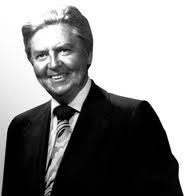
This wrestling empire had very humble beginnings. Roderick James McMahon promoted his first boxing match in 1915. The match, which took place in Havana on April 5th, pitted World Champion Jack Johnson against Jess Willard. In 1925, Roderick formed a partnership with Tex Rickard to promote boxing at Madison Square Garden.
In 1935, the McMahon family, which now include Roderick’s son Vince, started to promote professional wrestling matches. Ironically, this was the same year that Jim Crockett Promotions was formed. Unlike what most people may think, the Garden wasn’t always the “mecca of professional wrestling.” In McMahon’s early days of promoting professional wrestling, the Garden was the one building that they would NOT run professional wrestling events in. Roderick’s partner, Tex Rickard, hated wrestling, and did not want it at Madison Square Garden.
In 1948, professional wrestling finally made its way to the Garden. In an interesting bit of trivia, Joseph Raymond Mondt was the promoter of the first professional wrestling show in Madison Square Garden history. Vincent Jess McMahon would later join Mondt in promoting professional wrestling.
The McMahon-Mondt team would become the main promoters in the Northeastern part of the United States for the National Wrestling Alliance. Their company was named Capitol Wrestling Corporation. The main areas in the territory they ran were New England, New York, New Jersey, and Pennsylvania.
They signed their first major television contract in 1956 with WTTG to broadcast a weekly live show, which would then be syndicated throughout the region.
THE WORLD WIDE WRESTLING FEDERATION IS BORN
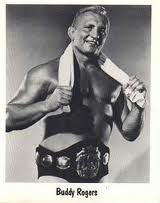
In 1963, the history of professional wrestling was about to be changed. The NWA World Champion was Buddy Rodgers. He was about to drop the NWA title, but the big question was to whom. Mondt-McMahon controlled Buddy Rodgers bookings. At the time, the NWA World Champion would travel from territory to territory to defend his title. Unfortunately, Mondt would rarely let “The Nature Boy” get booked outside of his Northeast territory. This infuriated the rest of the NWA promoters. When it was time for Buddy Rodgers to drop the strap, it was obvious that the NWA Board of Trustees would not side with the Mondt-McMahon choice for the championship. Capitol Wrestling Corporation wanted an Italian power house wrestler named Bruno Sammartino to become the new champion. Whereas, the rest of the NWA Board decided to put the strap on Lou Thesz.
The Mondt-McMahon group decided to break away from the NWA to form the World Wide Wrestling Federation. Their first line of duty was to name Buddy Rodgers as the very first WWWF Champion. Unlike Triple H in 2002, they didn’t just hand the belt to Rodgers. Instead, they claimed that the original “Nature Boy” beat Antonio Rocca in the finals of a tournament in Rio de Janiero on April 29, 1963. However, before Buddy Rodgers was going to drop the NWA title to Lou Thesz, the new WWWF wanted to pull a stunt that, Vince McMahon Jr and Ric Flair would do thirty years later. Instead of dropping the title, they wanted Buddy Rodgers to keep the NWA World Championship belt. Unfortunately for the WWWF, Buddy Rodgers wanted to get his $25,000.00 deposit back for the title. During the heyday of the National Wrestling Alliance, the World Champion had to give the NWA a $25,000.00 deposit for the belt. Once they dropped the strap, the ex-champion would get his deposit back. Rodgers wanted his deposit back, so on January 24, 1963; Buddy Rodgers lost the NWA title to Lou Thesz in Toronto, Canada.
The first wrestling card at Madison Square Garden under the new World Wide Wrestling Federation umbrella was held on February 25, 1963. The first match featured Jerry Colt beating Gordo Chihuahua in 10 minutes and 34 seconds. The main event pitted Skull Murphy and Brute Bernard against Pedro Morales and Miguel Perez. The match ended in a draw due to the “city that never sleeps” curfew at the 23:50 mark. Also on the card, the now former NWA Champion Buddy Rodgers beat Dory Dixon, and Bruno Sammartino and Bobo Brazil defeated Johnny Barend and the Magnificent Maurice 2 falls to 0 in a Best 2 out of 3 falls contest.
History was made on May 17, 1963 in front of 19,639 fans in Madison Square Garden. In his first official MSG title defense “The Nature Boy” Buddy Rodgers was defeated by Bruno Sammartino for the WWWF Championship by submission in 48 seconds, almost twice as long as it took Chris Benoit to beat Orlando Jordan for the United States Championship at SummerSlam 2005. Also on the card, Bobo Brazil and Dory Dixon fought the WWWF United States Tag Team Champions Skull Murphy and Brute Bernard to a curfew draw. The significance of this match is that the WWWF US Tag Team Championship is the same title that would later be turned into the WWWF World Tag Team Championship.
Throughout the 1960s, Bruno Sammartino was the dominate force in the WWWE. Although he pinned most of his opponents, he did lose the occasional match by count out or disqualification. The most controversial match during Sammartino’s initial title reign took place on the final Garden card of the decade. On December 9, 1969, Ivan Koloff beat Bruno Sammartino because the referee stopped the match due to excessive bleeding. Unfortunately for Ivan Koloff, the WWWF title could only change hands on pinfall or submission. Therefore, Bruno Sammartino would remain the WWWF’s World Champion as the decade came to a close. Despite not being named World Champion, this wouldn’t be the last time Bruno would have to deal with the “Russian Nightmare.”
AN END OF AN ERA?
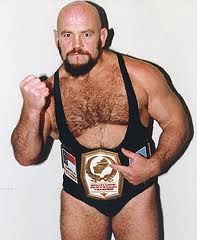
On January 18, 1971, Ivan Koloff finally beat Bruno Sammartino for the WWWF Championship. The match was held in Madison Square Garden where a shocked crowd witnessed Bruno’s defeated after a kneedrop off of the top rope in almost 15 minutes of action. Koloff’s reign of terror would quickly come to an end. At the very next Garden card, February 8, 1971, the WWWF United States Champion Pedro Morales defeated the new champion to unify the titles. In 1971, Pedro Morales would be stripped of the title of WWWF World Champion. During that year, the WWWF would rejoin the NWA family. The World Wide Wrestling Federation’s World title would be dropped from a World title to just a regional championship. After rejoining the NWA family, Pedro Morales was then recognized as the WWWF Champion.
On June 30, 1971, Luke Graham and Tarzan Tyler defeated Dick the Bruiser and The Sheik in New Orleans, LA. They would hold on to the titles for a little over six months until they were defeated by the duo of Karl Gotch and Rene Goulet.
Like Bruno Sammartino, one of Pedro Morales’ most controversial title defenses would be stopped because the champion was bleeding too heavily. This match occurred, like Bruno’s, at MSG. This match occurred on August 30, 1971. On this card was Terry Funk’s MSG debut, as he and father Dory Funk, Sr. wrestled Al Costello and Don Kent to a 45 minute curfew draw. On September 30, 1972, the WWWF presented their very first unofficial super card called “Showdown at Shea.” The main event was probably the first big dream match-up in WWWF history. WWWF Champion Pedro Morales battled former champion Bruno Sammartino to a 65 minute draw. In the WWE of 2005, a dream match on that level would probably be able to fill a domed stadium. However, back in 1972, this battle of the top fan favorites in the industry only drew 22,508 fans for a gate of $140,923.
BACK ON TOP
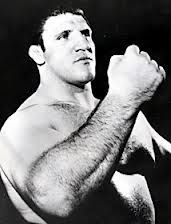
Like Bruno Sammartino before him, Pedro Morales would lose his WWWF title to the man that left him lying in a pool of blood. On Decemeber 1, 1973, Pedro Morales lost the title to Stan Stasiak. Like the last heel to be crowned WWWF Champion, Stan Stasiak was short. A mere 9 days later, Stasiak would drop the title in Madison Square Garden to the WWWF’s first two-time champion, Bruno Sammartino.
It appears that the first Madison Square Garden house show was televised on April 29, 1974. The announcer on the card was a young man named Vince McMahon Jr. The main event saw Bruno Sammartino battle Killer Kowalski to a no contest as the brawled outside of the ring, and other wrestlers had to come out of the locker room to restore order.
April 26, 1976 will go down in history as one of the most eventful nights in WWWF history at Madison Square Garden. Ric Flair made his Madison Square Garden wrestling debut as he beat Frankie Williams, would later be known as the preliminary wrestler who Roddy Piper beat up on one of the first Piper’s Pit segments. During the main event of the evening, Bruno Sammartino faced Stan Hansen for the WWWF Championship. During the match, after a botched landing from a Stan Hansen bodyslam, Bruno Sammartino’s neck broke. From an angle standpoint, Hansen’s famed “Lariat clothesline” was blamed for breaking Sammartino’s neck. This set up their historic rematch at Shea Stadium, followed by a steel cage match between the two (at MSG) upon Bruno’s return.
THE BACKLUND YEARS
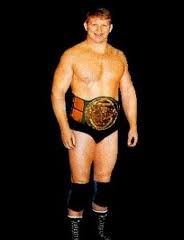
April 30, 1977 would go down in history as the last time that Bruno Sammartino would be seen wearing the WWWF Championship. On that night, Bruno would walk into Baltimore, MD as champion, and “Superstar” Billy Graham would leave as the new title holder. Graham would go on to hold the belt for almost 10 months. That is the longest WWWF/WWF/WWE Championship title reign for a “rulebreaker” in the company’s history. Billy Graham would go on to lose his title the same way he won the championship, with his feet on the ropes. In his title victory, he put his feet on the ropes for leverage. In his title lose, his feet were on the ropes to try and block the pin attempt by Bob Backlund. Unfortunately, the referee never saw his foot on the bottom rope, and a new champion was crowned.
In December 18, 1978, the NWA World Champion Harley Race defended his title in a rare Garden appearance for the NWA titleholder. A month later (January 22, 1979), Roddy Piper made his MSG debut against Frankie Williams. On December 17, 1979, Ted DiBiase would fight in MSG for the final time until he would return in 1987 as “The Million Dollar Man.” On his way out, he put over a young upstart named Hulk Hogan, who was making his Madison Square Garden debut.
In mid-1979, the World Wide Wrestling Federation would undergo a historic transformation. They would drop the “Wide” from their name, and be called the now famous “World Wrestling Federation.” Along with the name change, the WWF added a secondary title. Thanks to another “fictious” tournament in Rio de Janiero, a wrestler was “given” a champion. Pat Patterson was that wrestler, and the new title was the WWF Intercontinental Championship. As the decade came to a close, Bob Backlund kept a firm grip on the now World Wrestling Federation Championship. While Backlund was the top dog, there were two feuds that overshadowed the belt.
On January 22, 1980, in a scientific exhibition between teacher, Bruno Sammartino, and his protege, Larry Zbyszko, the student attacked the man who took him under his wing. Their seven month long violent feud was culminated inside the confines of a 15 foot high steel cage. On August 9, 1980, Bruno Sammartino beat Zbyszko in the cage at the latest Showdown at Shea in front of 36,295 fans. On the same card, a heel “Incredible” Hulk Hogan faced his nemesis at the time, Andre the Giant.
While the WWE would like you to think that Bob Backlund is only a two-time champion, whose first title reign lasted from February 20, 1978 until December 26, 1983, that was not the case. In a tour of Japan, Backlund defended the WWF Championship against NWF Champion Antonio Inoki. The NWF title holder pinned Bob Backlund for the WWF strap. The date of this title change, which was never recognized by the WWF, was November 30, 1979. Backlund fought Inoki in a rematch for the WWF Championship on December 6, 1979. Due to the match’s controversial ending, the WWF title was declared vacant. Bob Backlund’s “second” title reign began on December 17, 1979. On that evening, Bob Backlund fought Bobby Duncum in a Texas Death Match. While Backlund’s title loss was never announced on television, he arrived at the Garden minus the belt, and was never introduced as the champion.
The title was held up for a second time during Backlund’s “initial” recognized title reign. On October 19, 1981, Bob Backlund fought Greg Valentine. After Backlund defeated Valentine, a dazed referee raised Greg Valentine’s hand in victory thinking it was Backlund’s arm. Backlund defeated Valentine in their November 23rd rematch. While the belt was declared “vacant” in New York City, Backlund continued to defend the WWF title throughout the region.
During Backlund’s “first” title reign, Capitol Wrestling Corporation declared that the WWF title was once again a “World” Championship. The WWF title would no longer be recognized as a regional championship.
Backlund fought a “Who’s Who” list of wrestlers from the late 1970s until the early 1980s. Besides fighting WWF wrestlers like Don Muraco, Pat Patterson, and Greg Valentine, Backlund did something that no other WWF/E Champion had done since, or ever will do again. During his reign as Champion, Bob Backlund was booked in World Title Unification matches against the AWA World Champion Nick Bockwinkel, and the NWA World title holders Harley Race and Ric Flair. Despite battling all of these wrestling legends, Backlund’s greatest feud, and most memorable match were against “Superfly” Jimmy Snuka.
The night was June 28, 1982 at Madison Square Garden. WWF Champion Bob Backlund defended his title against Jimmy Snuka inside of a steel cage. What made this match memorable was the match’s finish. As Backlund lied down on his back in the middle of the ring, Jimmy Snuka scaled to the top rope. Once he reached the top turnbuckle, Snuka took a dramatic pause, and then climbed to the top of the cage. Most WWF steel cage matches at the time had two simple rules. You can win the match by either walking through the door, or climbing over the top of the cage. Due to Snuka’s distinct climbing advantage, it was ruled that he could not win the match by climbing over the top of the cage. When Snuka reached the top of the cage, he performed a move never seen before in the history of the business. Jimmy Snuka flew through the air to deliver his patented “Superfly Splash.” Unfortunately for Snuka, Backlund rolled out of the way, and Snuka came crashing into the mat. Backlund then escaped out the cage door for the victory. The move was so devastating that Snuka would only try the stunt one more time in his career. That would be after a steel cage match against Intercontinental Champion Don Muraco about a year later in Madison Square Garden. No other wrestler attempted a top of the cage dive until Mankind delivered an elbow drop from the top of the cage at SummerSlam 1997. Since then dives, backflip, elbow drops, and headbutts off of the top of the cage have become common place in the world of professional wrestling.
VINCE JUNIOR TAKES OVER
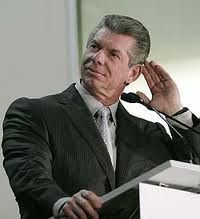
In 1980, Vincent McMahon Jr. founded a company called Titan Sports. In 1982, Vince Junior bought the WWF from his father, thus making Titan Sports the parent company of the World Wrestling Federation. One would think that Vince Junior would receive a sweetheart deal to purchase the company from his dad. Nothing could be further from the truth. In the terms of the agreement to purchase Capitol Wrestling Corporation, Vince Junior was to make quarterly payments to the former owners of the company. If he missed even one payment, the company would be given right back to these original owners. To show how much faith Senior had in his son, the elder McMahon felt that Vince Junior would fail.
After taking over the company, Vince McMahon Jr. put his plan into motion. He wanted to turn the WWF into the WORLD Wrestling Federation. McMahon goal was to eliminate the WWF’s regional status. The way he went about it was either sneaky or business savvy, depending on your point of view. Vince started to air a national cable television show on the USA Network called “All-American Wrestling.” Vince McMahon, Jr. had regional promoters from across the country send in tapes of their top stars for Vince to broadcast on the show. On any given show, you could see matches from Verne Gagne’s AWA, Jim Crockett’s Mid-Atlantic region, Eddie Graham’s Florida territory, and Fritz Von Erich’s World Class Championship Wrestling, along side Vince’s own WWF wrestling matches. If you didn’t know any better, you may not have even realized that this was a Titan Sports produced television show. These promoters may have thought that this was a great opportunity. After all, it can’t be bad for business to have the entire nation see their stars on a weekly basis. Can it? In this case, it can. Vince allowed these tapes to serve TWO purposes. First, he used these tapes as a scouting tool. The promoters actually GAVE him tapes of their best performers. If McMahon was going to be successful on a national level, he needed to acquire the country’s best professional wrestlers. How would he know who was the best of the best? Like a great baseball team, he would need to scout his soon-to-be opposition. The second purpose the tapes served was to have the fans of the World Wrestling Federation become familiar with the other territories best wrestlers. This way, when Vince would sign these wrestlers, his fans would already know who these performers were, and they would already be viewed as stars before their first match in the WWF.
The next step in McMahon’s quest for professional wrestling domination was to invade the territories. He couldn’t just come in to town and announce in his best Kevin Nash/Big Stevie Cool voice “We’re taking over!!!!!” He would have gotten buried. In the days of the territories, whenever a renegade promoter would try to invade another promoter’s territory, the group of promoters would send their top stars into the invaded region to destroy the rival promoter’s attempt at a takeover. Vince was smarter then this, as he knew the game. What Vince did took lots of money, risk, and, as his Mr. McMahon alter-ego may say, huge “grapefruits.”
Since the early days of television, wrestling promoters would send local television stations tapes of their shows to air for free. Occasionally, some networks would pay for the cost to produce the wrestling shows. The promoters didn’t mind giving away their shows for free, because these broadcasts served as infomercials to get people to attend their house shows. At the time, house shows were the bread and butter money maker for the promotions.
Vince McMahon went to the local television stations in each region and offered to actual PAY the stations to air his programs. He wanted his shows to air in the current time slots that the local wrestling shows currently occupied. This was a very smart business move. If fans in St. Louis were accustomed to watching “Wrestling at the Chase” at 10:00am on Saturday mornings, Vince knew that he would have a good shot of keeping those viewers if he took over that time slot. If Vince’s show aired on a different day and/or time, the wrestling fans in St. Louis may not realize it or even care to see a show broadcast by Vince.
Before McMahon raided the regional organizations, he tried to buy many of them. Some, like Stu Hart’s Stampede Wrestling, eventually sold their territory to Vince. Others, like Verne Gagne, turned McMahon down. There is an old saying that goes, “if you can’t beat them, join them.” In Vince’s land of wrestling dominance, “if you can’t buy them, destroy them.” Out of all of the major promoters, Verne Gagne seemed to be Vince’s Public Enemy #1. Even Vince Senior saw the writing on the wall, as he told several of his friends to sell their stock in the AWA. Vince Senior let out the warning signals a full year before Junior signed Hulk Hogan.
From the AWA, Vince acquired Bobby Heenan, Jesse Ventura, David Schultz, Mad Dog Vachon, Gene Okerlund, and Hulk Hogan, amongst others. From Texas, he grabbed the Fabulous Freebirds. He took the Junk Yard Dog from the Mid-South territory. Georgia Championship Wrestling said goodbye to men like King Kong Bundy, and Jake “The Snake” Roberts. Jim Crockett lost Ricky Steamboat, Roddy Piper, Bob Orton Jr., and Greg Valentine. Other stars from around the country that went to the WWF included Paul Orndorff, Sgt. Slaughter, Randy Savage, the British Bulldogs, Mike Rotundo, Barry Windham, and Brutus Beefcake.
HULK-A-MANIA IS RUNNING WILD
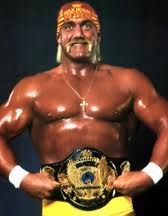
On December 26, 1983, Bob Backlund dropped the title to the Iron Sheik after the champ’s manager Arnold Skaaland threw in the towel as a form of submission, as the Iron Sheik had Backlund in his dreaded camel clutch submission move. The scene was set for Vince Junior to insert his own hand picked WWF champion. That wrestler was Hulk Hogan. Hogan was the perfect Vince McMahon type of wrestler. He was larger then life, had huge muscles, a charisma life no other wrestler seen before him, and he was known by non-wrestling fans thanks to his role as “Thunderlips” in the Sylvester Stallone smash hit “Rocky III.” Vince Junior knew way back in 1980 that Hulk Hogan would be the star that would revolutionize the industry.
Hogan was more then happy to leave Minnesota for New York City. At the time, Hogan was the hottest face in the AWA, and quite possibly the entire wrestling industry. His character was constantly getting screwed after apparently winning the AWA World title. The Hulkster was getting frustrated with the back stage politics in the AWA. To make matters even worse, when Verne Gagne was finally going to relent to the outcry of the fans, and put the belt on Hogan, Gagne demanded a percentage of Hogan’s earnings when working overseas in Japan.
One of the conditions to get Hulk Hogan to come to the World Wrestling Federation was that the belt would be put around his waist almost immediately. After Backlund lost the title to the Iron Sheik, Vince Senior wanted a Backlund/Sheik rematch at MSG. Hogan feared that he wouldn’t be getting the title as promised. He went to the junior McMahon. On their TV show the next week, it was announced that Backlund was too injured to wrestle the Iron Sheik in a rematch at MSG. Before a sell out crowd at Madison Square Garden, Hulk Hogan captured his first WWF World Championship on January 23, 1984.
There was even more intrigue going into the match then just Vince Senior’s attempt to get the strap back on Bob Backlund. Verne Gagne suddenly realized that Vince Junior wasn’t just about to run shows in his territory, but Vinnie Mac was going to do it with the stars Verne helped make famous! It was time for Verne to go into panic mode. Verne Gagne offered the Iron Sheik $100,000.00 to break Hulk Hogan’s leg during the match, and bring the WWF World title belt to Minnesota. Despite his loyalty for Gagne breaking him into the business, the Sheik felt it was a better business move to be loyal to the McMahon’s since he made his biggest money with the WWF up until that point.
Hogan and the WWF’s band of wrestling all-stars traveled from town to town, and region to region. The local promoters never stood a chance. One by one, they slowly began to fade. There was one exception; Jim Crockett Promotion. In a way, the WWF inadvertently helped the Crockett’s Mid-Atlantic promotion become the solid #2 national touring wrestling company. In the middle of Vince’s takeover, McMahon purchased Georgia Championship Wrestling in April of 1984 for $750,000.00. As part of the purchase, the WWF gained access to the popular 6:05pm Saturday night timeslot on WTBS. In July of 1984, gone was Georgia Championship Wrestling. In its place, was the World Wrestling Federation. Georgia Championship Wrestling presented weekly shows in front of a live studio audience. The WWF’s version of Georgia Championship Wrestling was filled with pre-taped matches. GCW’s loyal audience did not want to see the WWF entertainment oriented wrestling company. They wanted the hard fought athletic action that they were used to. Due to the fans’ protest, TBS gave a Saturday morning timeslot to Jim Crockett. Not only was the WWF’s primetime slot quickly failing in the ratings, but Jim Crockett’s early Saturday morning show was starting to gain higher ratings. Vince quickly realized that the timeslot was a money loser for his company. Vince decided to sell the TV rights to Jim Crockett for $1million. Fans around the United States were able to watch the likes of Dusty Rhodes, Magnum T.A, Tully Blanchard, and Ric Flair in primetime every Saturday night.
While Vince’s attempt at keeping a complete cable wrestling monopoly did not last, he had a couple of more tricks up his sleeve. McMahon had his star Hulk Hogan firmly entrenched as the company’s top dog. He had the television affiliates throughout the country carrying his shows. He had the country’s top stars. Now, it was time to get people outside of the industry to take notice. One way he did this was back going back to his past. While most people know that Vince is an incredible promoter of professional wresting. A lot of people do not realize where he got his start. He started out promoting rock concerts. He used his knowledge of rock and roll, and his knowledge of wrestling to create an angle that would catapult the WWF into a pop-culture phenomenon: “The Rock-n-Wrestling Connection.” 80’s pop-star Cyndi Lauper became friends with Captain Louis Albano after meeting him on an airplane. He even appeared as her father in Lauper’s top hit “Girls Just Wanna Have Fun” music video. Vince McMahon worked out an agreement with her manager/boy friend David Wolfe to bring Lauper into the WWF. From a storyline standpoint, the WWF used her friendship with Albano to book her on the hot interview segment “Piper’s Pit.” During that segment, Albano took credit for all of Lauper’s success and popularity. At the time, Lauper was a huge star. She was on the same level as Madonna at the time. The Albano/Lauper rift sent shockwaves through the industry (storyline wise). Cyndi Lauper decided to beat Albano at his own game: managing. Lauper said that she would manager Wendi Richter. Wendi was an extremely attractive wrestler from the state of Texas. This five year veteran would do battle against the woman who currently held the Women’s championship for twenty-eight consecutive years, The Fabulous Moohla. Moohla would be managed in the contest by Captain Louis Albano. The bout was billed as “The Brawl To Settle It All.” The date was July 23, 1984. This was the first time the WWF would feature a women’s match in the main event position. While the card, which also featured a Hogan title defense and a battle royal, drew the worst attendance of the year at MSG, the show was hugely successful. Part of the show was broadcast as a one-hour special on M-TV.
After this night, the WWF was no longer just a wrestling organization. The WWF was now the place to be. For celebrities and sport stars, a WWF house show was now the place to be seen. On any given night, you could see a Hollywood star or an athlete like Dave Winfield in the front row. The main stream media went along for the ride as well. Highlights of Vince’s major house show cards would be played on the local sports telecasts during the 10:00pm or 11:00pm news. Even the syndicated sports highlight show, “George Michaels’ Sports Machine” ran WWF highlights. WWF wrestlers were shown on M-TV. They were featured in major magazine articles. None was more impressive then when “Sports Illustrated” ran a cover story on professional wrestling. The cover boy for that issue was Hulk Hogan. The WWF even had their own cartoon show.
The WWF capitalize on their sudden fame. Thanks to the marketing strategy and major media blitz created by the genius of Vince McMahon, the WWF was about to become a merchandising powerhouse. If you could put a name or a face on something, the WWF did. They sold everything from lunch boxes to t-shirts to wrestling figures. They even created Hulk Hogan vitamins (steroids not included). Hulk Hogan even became a pitchman for such products as the Ugly Stick fishing rod, and Right Guard deodorant.
THE BIRTH OF WRESTLEMANIA
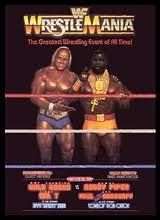
The WWF machine was rolling throughout the mid-eighties. However in 1985, Vince McMahon took one tremendous gamble that would either turn the World Wrestling Federation into the media/marketing sports entertainment giant or it would bankrupt the WWF and end Vince’s dream of becoming the king of professional wrestling. This risk would be called “WrestleMania.”
As the story goes, when Vince McMahon was on vacation (who would have thought that a workaholic like Vince ever took a vacation) he had a vision of creating a wrestling super show. To those who aren’t wrestling historians, Vince will be credited as being the creator of the super card. This couldn’t be further from the truth. Vince’s father ran several Showdown at Shea cards in the 1970s. More recently, the Crocketts were running the “Granddaddy of them all” Starrcade. Even World Class Championship Wrestling had a supershow called the “David Von Erich Memorial Parade of Champions” before the plan for WrestleMania even went into effect. While Vince didn’t create the super card, he took it to a whole new level.
The first WrestleMania was held on March 31, 1985 in Madison Square Garden. Pay-Per-View was a new experience in the sports world. However, the WWF would wait a little while longer before they would enter the pay-per-view market. For fans that were not able to get into the sold out Madison Square Garden to see the show, the WWF allowed them to view the telecast via closed circuit television. While the show was sold out at the arena, the closed circuit ticket sales would be what would either make or break the WWF. Vince booked 200 arenas in North America to broadcast Mania on closed circuit television. A week before WrestleMania, advanced ticket sales at these arenas were horrible. WrestleMania appeared that it was going to bomb. Due to the poor advances, about 70 arenas cancelled the event in their buildings.
Thanks to the final week media push by McMahon, Hulk Hogan and Mr.T were booked on Late night with David Letterman, the Richard Beltzer show (which garnered huge publicity thanks to a front facelock by Hogan that cause Beltzer to bust his head open), and they were the hosts on Saturday Night Live on the night before WrestleMania. All of a sudden, WrestleMania was the show that was needed to be seen by all.
Ticket sales were not the only problem heading into WrestleMania. The biggest problems revolved around the WWF’s biggest media star for the show: Mr. T. Thanks to his appearance in Rocky III and his show the A-Team, Mr. T had the reputation of being a bad ass. The day of Mania, Mr. T decided to back out of the show. He was afraid that something would screw up, and his “bad ass” image would be destroyed. Another problem that had with Mr. T wasn’t caused by the actor, but by his opponents.
Mr. T was an actor. He wasn’t a wrestler. He wasn’t a football player. He was just an actor with muscles. Nothing more, nothing less. The wrestlers resented him, because he was given a main event slot, and never paid his dues in the business. As part of his agreement to work the match, Roddy Piper and Paul Orndorff were supposed to “put over” Mr.T. As the date neared, neither Piper or Orndorff wanted to do the job. Eventually, Orndorff agreed to drop the fall to Hogan. To their credit, Piper and Orndorff were both very professional, and neither made Mr. T look like a jobber. Although, Piper did embarrass T when he threw amateur wrestling at him early in the match.
While WrestleMania featured nine matches, there were really 3 top matches that everybody was looking forward to. Each of the big three matches had great build up leading to the event. Plus, unlike today’s pay per view events, each match was built up over months, and not just a couple of weeks. The three main feuds heading into the inaugural WrestleMania was Andre the Giant vs. Big John Studd, Wendi Richter vs. WWF Women’s Champion Lelani Kai, and the main event of Hulk Hogan and Mr. T vs. Roddy Piper and Paul Orndorff.
The feud between Andre and Studd was simple. Andre was the giant of professional wrestling, and at 6 feet 10 inches tall, John Studd argued that he was the real giant of professional wrestling. It was a natural rivalry between the two. Throughout the early to mid-eighties, the two clashed in battle after battle. Their feud was taken up a notch in December of 1984. Ken Patera and John Studd fought Andre the Giant and S.D. Jones in a match that was taped for their weekly television show. During the match, Studd and Patera double body slammed Andre, and then were handed a pair of scissors by their manager, Bobby “The Brain” Heenan. Studd and Patera proceeded to cut the curly locks off of Andre’s head. Over the next several weeks, Studd, Patera, and Heenan went out to the ring with ziplock baggies filled with the Giant’s hair. Every chance the could get, the trio bragged that they slayed the Giant. Andre received a small measure of revenge against the trio when he beat Ken Patera by disqualification at the Garden house show on January 21, 1985. That show is a historic show as Bret Hart made his Madison Square Garden debut by beating Rene Goulet. A match was signed for WrestleMania between Andre and Studd. This was no ordinary match. John Studd bragged that nobody could body slam the “Giant Studd.” He offered $15,000.00 to anyone who could accomplish this feat. Fans were more excited about this angle then any “Masterlock Challenge” that you see today. The match between Andre and Studd was a $15,000.00 Bodyslam Challenge. If Andre failed to slam Studd, then he would retire from wrestling.
Despite beating the Fabulous Moohla for the belt in July 1984, the Richter/Moohla war wasn’t over. At the February MSG house show, Wendi Richter put her Women’s title on the line against the Fabulous Moohla managed wrestler, Lelani Kai. During the end of the match, Moohla whacked Richter in the head. Lelani Kai covered Wendi Richter for the pin, and a new champion was born. During the weeks leading up to the their WrestleMania rematch, Richter would go on television screaming in her Texan accent the she “didn’t lose that title to one woman. It took two women to beat me” The 9 month feud between Moohla and Richter was just heating up.
The seeds for the main event of WrestleMania were actually planted on Piper’s Pit the previous June. That was the famous Piper’s Pit where Lou Albano had his blow up with Cyndi Lauper. In December, during the holiday MSG house show, the WWF was going to present Cyndi Lauper with an award for her contributions that she made with the WWF. At the same time, Lou Albano was reuniting with Lauper, and Lauper was giving the WWF a copy of one of her gold platinum records. During the ceremony, Roddy Piper hit the ring. After making fun of everyone, piper went on the attack. He smashed the platinum record over Albano’s head. He beat up Cyndi’s manager/boyfriend David Wolfe. Next, he went after Lauper. Before he could attack her, Hulk Hogan ran to the ring to make the save. The fuse was lit for a Hogan/Piper showdown. The date would be February 18, 1985.
As a side note, the December house show was historic, because that was the event where the television news show 20/20 was doing a piece on the World Wrestling Federation. During the taping of the 20/20 segments, reporter John Stossel interviewed “Dr. D” David Schultz. In a time where the wrestlers “protected” the business, Stossel asked Schultz if wrestling was fake. “Dr. D” responded to the question by repeatedly smacking Stossel in the ear. Stossel would file a lawsuit against Schultz and the WWF due to having permanent hearing loss in the damaged ear. Schultz would later be fired. However, his firing may have had more to do with wanting to beat up Mr. T at an LA house show, then his abuse of John Stossel.
The battle between Hulk Hogan and Roddy Piper was billed as “The War To Settle The Score.” It was broadcast live on M-TV. This was the same Garden card that Wendi Richter lost her Women’s title to Lelani Kai. On the undercard, Jimmy Snuka beat “Cowboy” Bob Orton with a sunset flip. What is the big deal about this match? Shortly before the ending of this match, Orton charged at Snuka. The “Superfly” moved out of the way, and Orton hit his arm against the steel post. He legitimately injured his left arm. Thus, Orton’s famed “cast” gimmick was born.
Before the clash between Hulk Hogan and Roddy Piper, the “Hulkster” was led to the ring by an entourage that included David Wolfe, Cyndi Lauper, and Lou Albano. Towards the end of the contest, the referee was knocked out and Hogan was down as well. Roddy Piper and Paul Orndorff double teamed Hogan. They turned their attention to Cyndi Lauper next. The rock star was standing on the ring apron protesting the heels attack on Hogan. Piper and Orndorff slowly walked over to a cornered Lauper. Mr.T, who was sitting in the front row, jumped the guard rail, and pulled Lauper down from the ring. He then entered the ring, where Piper and Orndorff double teamed Mr. T. Eventually, Hogan made it to his feet, and the two former Rocky III stars fought off the heels.
In the six weeks leading up to WrestleMania, Piper and Orndorff constantly did things to tick off Mr. T. One of the more famous incidents occurred when Piper and Bob Orton put midget wrestler The Haiti Kid on Piper’s Pit. After Kid admitted that he liked Mr. T, an infuriated Piper gave The Haiti Kid a mohawk haircut, so he can look like Mr. T. The WWF aired vignettes of the two teams, and how they were training for the match.
The card itself didn’t contain any four star wrestling classics. However, the main event of Hogan/T vs. Piper/Orndorff was voted Pro Wrestling Illustrated’s 1985 Match of the Year. In front of a sell out crowd at Madison Square Garden, Mean Gene Okerlund kicked off the evening with his rendition of the United States national anthem. The first official match in WrestleMania history featured Tito Santana beating the masked Executioner (Buddy Rose wearing a mask) via submission with the figure four leglock. In the fastest match (at the time) in history, King Kong Bundy pinned S.D. Jones in nine seconds. Who was the first manager to appear at WrestleMania? The answer was Jimmy Hart, who managed Bundy in the short contest. Ricky Steamboat made his WrestleMania debut by pinning Matt Borne following a flying bodypress. David Sammartino (with his dad Bruno in his corner) fought Brutus Beefcake (with his manager Johnny Valiant in his corner) to the first WrestleMania no contest, as both men were disqualified due to outside interference from their respective corner men. The first title match in Mania history featured the WWF Intercontinental Champion Greg Valentine against the Junk Yard Dog. After Valentine pinned JYD by using the ropes for leverage, Tito Santana ran down to the ring to inform the referee what happened. The match was restarted, but Greg Valentine wouldn’t cooperate. “The Hammer” walked back to the dressing room with his title, and lost via count out. In the first title change in Mania history, the Iron Sheik and Nikolai Volkoff beat Barry Windham and Mike Rotundo for the WWF Tag Team Championships after The Sheik hit Windham over the head with Fred Blassie’s cane. Andre the Giant bodyslammed Big John Studd to win the $15,000.00 Bodyslam Challenge. After the bout, Andre started to throw the hundred dollar bills out to the crowd. Bobby Heenan ran in the ring, and grabbed the duffel bag of money from Andre’s hands. Wendi Richter regained the WWF Women’s title from Lelani Kai. The main event was a star studded affair. Liberace was the guest timekeeper. Former baseball manager Billy Martin was the guest ring announcer. Former World Heavyweight boxing champion Muhammad Ali was named the guest time keeper. Towards the end of the match, all hell broke loose. Paul Orndorff had Hulk Hogan trapped in a full nelson while Bob Orton scaled the top rope. “Mr. #1derful” positioned himself and Hogan for “Cowboy” Bob’s attack. Orton jumped off the top rope with his casted arm heading straight towards Hogan’s head. At the last moment, the “Hulkster” moved, and Orton nailed Orndorff in the back of his head with the cast. Hogan covered Paul Orndorff for the pin to end the first WrestleMania. After the match, Piper abandoned his fallen partner in disgusted.
Next week: Part Two of the history of the WWF.
Historical data was taken from past issues of The Wrestling Observer newsletter, as well as the websites www.historyofwwf.com and en.wikipedia.org.







